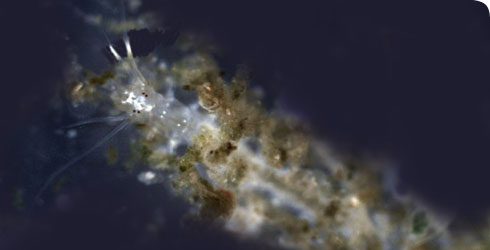Taxonomy
- Two antennae
- Four pairs of tentacular cirri
- Pectinate bars and conical paragnaths on both oral and maxillary rings
- Parapodia biramous
- Notosetae homogomph spinigers and falcigers, some falcigers forming simple hooks
- Neurosetae homogomph and heterogomph spinigers
- Heterogomph falcigers
Diagnostic description
As the rest of annelids, they exhibit two presegmental regions, the prostomium and peristomium, a segmented trunk and a postsegmental pygidium. Several evidence date the origin of polychaetes in the Cambrian era (around 500 millions before present), but some fossil records of larvae from Pre-Cambrian eras show features resembling polychaete larvae.
The nuchal organs, a pair of chemosensory structures on the postero-lateral margin of the prostomium, are apparently the only synapomorphic trait of the Polychaeta distinguishes them from other Annelida.
